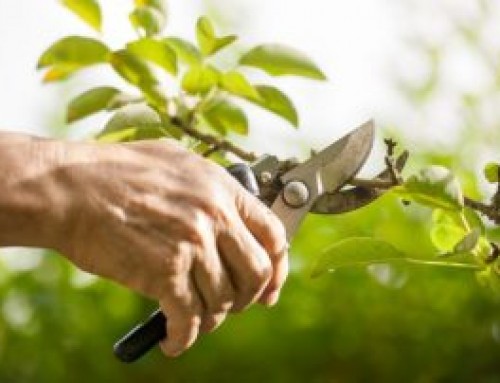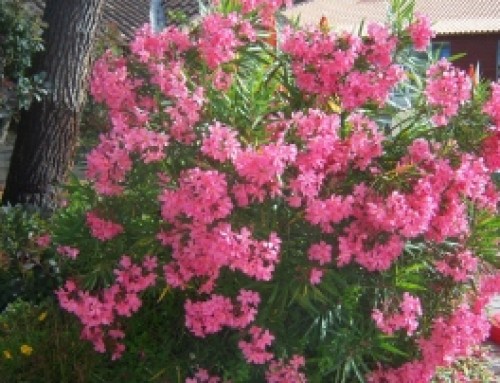February can deliver extreme weather in terms of thunderstorms flooding and even cyclones. Maintenance tasks such as keeping gutters and drains free of debris, potential mosquito-breeding sites free of standing water and the yard free of loose items that could become projectiles in high winds are especially important at this time of year.
Dangerous trees that could come down on powerlines, homes or people are also a serious concern. If you fear they already have reached this stage, engage a qualified tree lopper for further advice, thinning or removal. If you have recently planted young trees, did you research the mature height and take this into account before selecting a location? If you have doubts, it may be better to eliminate the tree now and start again with something more suitable in that spot (your local council and/or your local utility companies may be able to provide some suggestions). If you’re still keen on growing that type of tree, can one be planted in a more suitable location, before you’ve lost any more growing time? This might be a preferable option compared to an expensive tree removal years down the track, or worse still, a tragedy.
Soft and nutrient-stressed plants may also be more susceptible than usual to a whole range of pests and diseases, which are prolific at this time of year anyway. Be vigilant. Remember that preventing reproduction and proliferation now will help reduce problems in subsequent seasons.
Root rots are likely to show up in many gardens with waterlogged soils. Sensitive species in poorly drained positions might have done well enough during the drought, but could be paying the price if we have had a lot of rain. Symptoms might not become obvious until the rain stops and plants are hit by sun and heat.
Do give plants a little time to adapt (after such a lengthy period of wet and overcast conditions the foliage is bound to be quite soft), but wilted foliage, even though the soil is still moist, is an indication of a compromised root system. Badly rotted plants may rock in the ground. Infections may take some time to progress to the point of showing symptoms above ground, so keep an eye out in the coming months (or even years in the case of large trees).
If plants are still healthy but in danger, consider relocation or at least take cuttings for later planting in a better drained position. Depending on the location, it may be possible to improve drainage through appropriate landscaping solutions.
Once the weather fines up and the ground dries out enough to work on, you might be faced with having to tidy up lots of overgrown vegetation. Perhaps you’ll consider using the material to create your own mulch or compost. On the other hand, maybe you’d prefer someone to take it all away, and even do all the work, too.
How many other garden jobs you decide to take on may depend on the ongoing weather situation and the forecast ahead. February is still a very hot month, and most gardeners will be deferring non-essential garden tasks until conditions are more comfortable for both humans and plants alike.
However, autumn is a good time for establishing new trees, shrubs and lawns. So take some time now to do some research in books, on the internet or by visiting some of our public
gardens into which varieties are most suitable for your needs. Deciding on the right position is also important. You can also get to work on preparing the site e.g clearing and weed control, and visiting some local garden centres to see what’s available. If you can’t find the varieties you’re after, ask if it might be possible to have them ordered for you.
Conditions for vegetables are still difficult at this time of year, but as we’ll be moving into the autumn planting season soon, take this opportunity to tidy-up the vegetable garden and prepare beds for new crops. This includes adding lime or dolomite where necessary, especially if you intend growing peas or beans, the cabbage family and lettuce, or if you’ve had problems with blossom end rot on tomatoes previously. Keep beds well-mulched to reduce weed growth and erosion from summer storms.
If you want to grow heirloom or unusual seeds not readily available in local retail outlets, send off an order to a specialist seed vendor without delay to have them on hand in time for autumn planting and before stocks of popular varieties sell out.
If you want to have a go this month, try tomatoes, capsicums and eggplants; lettuce (heat-tolerant varieties); radish; beetroot and silverbeet; beans; cucumber and zucchini; cabbage, broccoli and cauliflower; turnip. Last chance for sweetcorn before it gets too cool.
Autumn is great time to establish a wide variety of trees, shrubs and perennials, so use this down-time to plan new additions to the garden.
As always, 2Ezy skips can deliver a skip to you for all your rubbish needs.
Whether it is building, gardening or cleaning out the garage, new projects are so much easier when you have a skip bin to help. With 2ezy skips, you can start an efficient, affordable and environmentally friendly outdoor or indoor project.
For more information regarding what kind of waste types you can put in skip bins, the areas we service Brisbane North to inner south suburbs, and the costs of each skip bin, contact us today. With affordable skip bins in a range of sizes, we can help you clean out your rubbish from your garden, home or office project fast.





